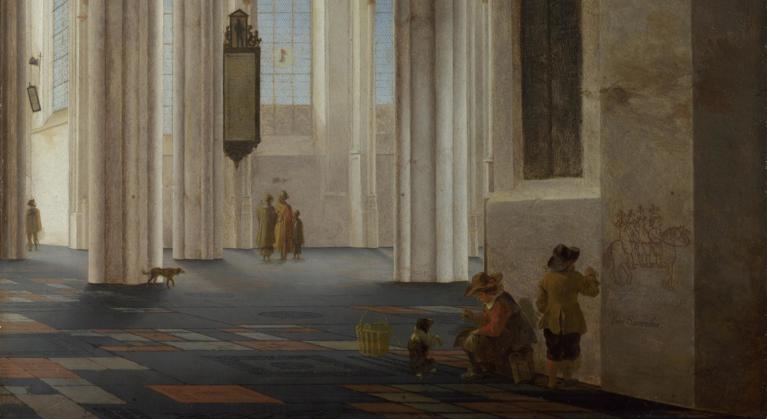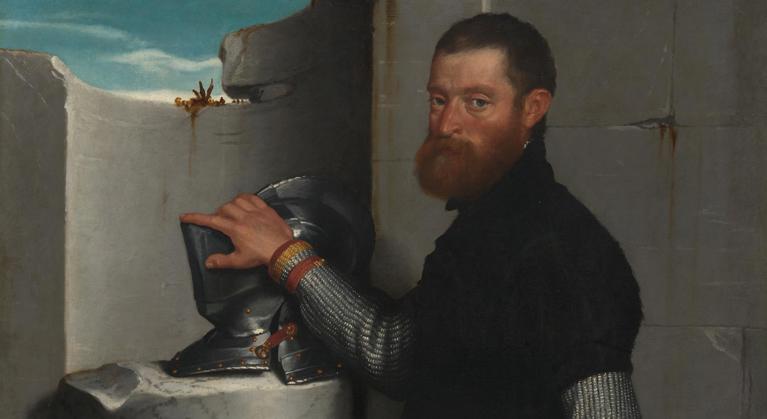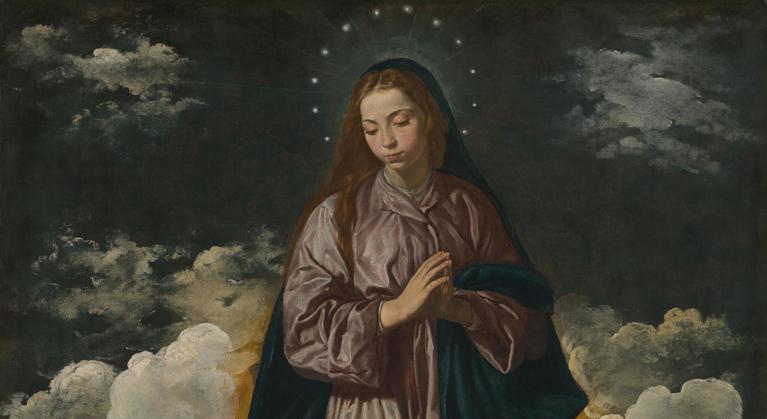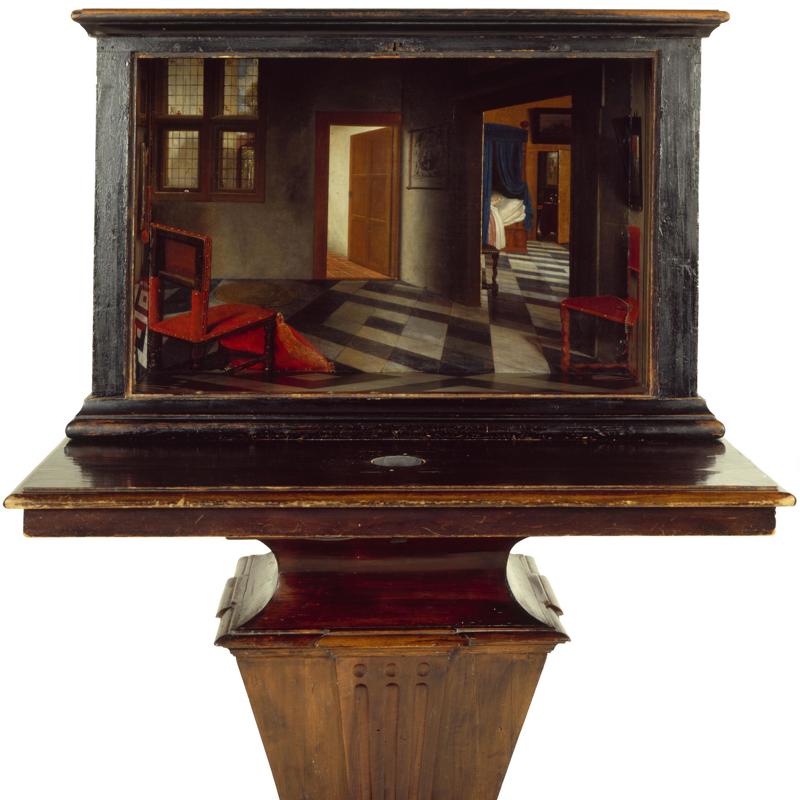About
Delve deeper into how the collection has been redisplayed by focusing on particular eras represented throughout the Gallery.
These are guided walking tours through the collection for which headsets will be provided. Please meet at the Information Desk in the Sainsbury Wing Foyer.
Rococo to Romanticism

The first half of the 1700s was dominated by the Rococo, a whimsical decorative style defined by its light, bright colours and curving forms.
By the 1770s tastes had changed towards a more austere Neoclassical style. Fashions – both in dress and in painting – moved away from the frivolous towards crisper lines and more sober designs. The French Revolution, which began in 1789 and saw the removal of the French monarchy, marked a definite shift in art as well as politics.
This is a guided walking tour through the collection for which headsets will be provided. Please meet at the Information Desk in the Sainsbury Wing Foyer.
Your host: After a successful legal career, Emma Matthews set up an art tours business in 2007, while doing a degree in the History of Art. Her passion for the National Gallery Collection shines through in her tours. Matthews constantly seeks to develop new ways of looking at art and understanding its meaning.
Towards Modernism

Inspired by the Impressionists, a new generation of artists sought to define the future of modern art. From the 1880s, the Post-Impressionists abandoned the traditional, accurate representation of a person or object. Instead, they used bold colours and expressed strong emotions. In doing so, they moved away from the Impressionists' focus on modern life.
At the turn of the 20th century, painting found itself in a period of dramatic change as experimentation, innovation and new ways of picturing the world became ever more exciting and unexpected.
Your host: Martin Brown is a qualified art historian in History of Art and Architecture. As an award-winning Blue Badge Guide experienced in guiding in National Gallery, Tate Britain and Tate Modern, Martin is passionate about the Gallery’s collection. Before retraining as a Blue Badge Guide, Martin worked for 30 years in education. Firstly, as a teacher of French and German in London secondary schools, and for the last 10 years as Head Teacher of a large Secondary School. In addition, Martin has worked as a Secondary School Improvement Adviser for a local authority, for OFSTED as an Inspector and for the Department for Education as a National Leader of Education.
Deceiving the eye: Dutch perspectives

In 17th century Netherlands artists became very interested in the use of perspective. Portraits and scenes of everyday were designed to deceive the eye. The representation of three-dimensional space on a two-dimensional surface to create a convincing illusion of depth, plus a general interest in optical illusion, became a central concern for many 17th-century Dutch artists.
This tour studies the changing perspective and how it foreshadowed changes in painting technique across Northern Europe.
Your host: Martin Brown is a qualified art historian in History of Art and Architecture. As an award-winning Blue Badge Guide experienced in guiding in National Gallery, Tate Britain and Tate Modern, Martin is passionate about the Gallery’s collection. Before retraining as a Blue Badge Guide, Martin worked for 30 years in education. Firstly, as a teacher of French and German in London secondary schools, and for the last 10 years as Head Teacher of a large Secondary School. In addition, Martin has worked as a Secondary School Improvement Adviser for a local authority, for OFSTED as an Inspector and for the Department for Education as a National Leader of Education.
Radical innovation and rivalry

By the 16th century, Venice was the most powerful republic in Europe. Situated at the crossroads of trade routes that stretched across sea and land, its thriving commerce in luxury materials and wide range of patronage encouraged both artistic opportunity and fierce competition.
Portraits grew in scale, ambition and complexity in the first half of the 16th century with contradiction at the heart of Renaissance portraiture. A key feature of 16th-century northern Italian portraiture is its striking realism. The early decades after 1500 saw a lively exchange of ideas between leading artistic centres such as Venice, Florence and Rome. Painters developed distinctive styles that became hallmarks of their cities.
Your host: After a successful legal career, Emma Matthews set up an art tours business in 2007, while doing a degree in the History of Art. Her passion for the National Gallery Collection shines through in her tours. Matthews constantly seeks to develop new ways of looking at art and understanding its meaning.
Towards Modernism

Inspired by the Impressionists, a new generation of artists sought to define the future of modern art. From the 1880s, the Post-Impressionists abandoned the traditional, accurate representation of a person or object. Instead, they used bold colours and expressed strong emotions. In doing so, they moved away from the Impressionists' focus on modern life.
At the turn of the 20th century, painting found itself in a period of dramatic change as experiment, innovation and new ways of picturing the world became ever more exciting and unexpected.
Your host: Martin Brown is a qualified art historian in History of Art and Architecture. As an award-winning Blue Badge Guide experienced in guiding in National Gallery, Tate Britain and Tate Modern, Martin is passionate about the Gallery’s collection. Before retraining as a Blue Badge Guide, Martin worked for 30 years in education. Firstly, as a teacher of French and German in London secondary schools, and for the last 10 years as Head Teacher of a large Secondary School. In addition, Martin has worked as a Secondary School Improvement Adviser for a local authority, for OFSTED as an Inspector and for the Department for Education as a National Leader of Education.
Power and piety

Spain was a global power at the end of the 1600s. The ruling Habsburg dynasty controlled territories across Europe including parts of present-day Belgium, the Netherlands and all of southern Italy. They had also conquered and colonised lands in the Americas and the Philippines.
This guided tour tracks the evolution of the Baroque period and how it became the backdrop to the politics of power throughout the 17th century. Look at Dutch landscape painting and the focus on nature, the idealisation of Roman landscapes through Poussin, Spanish painting and, of course, Italian painting during the century.
Your host: After a successful legal career, Emma Matthews set up an art tours business in 2007, while doing a degree in the History of Art. Her passion for the National Gallery Collection shines through in her tours. Matthews constantly seeks to develop new ways of looking at art and understanding its meaning.



Our collection redisplayed
Tickets
Members: £20
This is a Members' exclusive event. Please have your membership card and ticket ready.
Please meet at the Information Desk located in the Sainsbury Wing Foyer.


